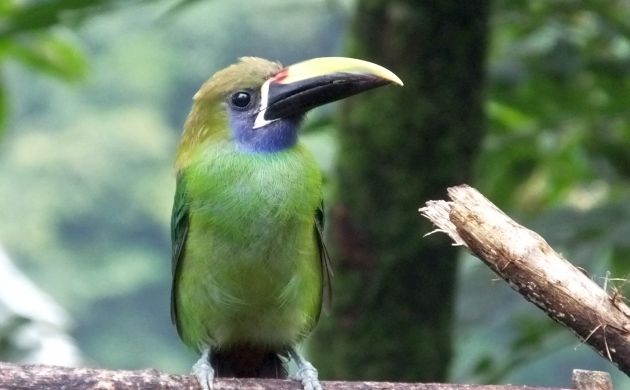
Flying in to Costa Rica is accompanied by porthole views of the Central Valley and the mountains that flank it. Curvy roads twist their way through a broken quilt of coffee, wind breaks, and forested riparian zones. Where the land rises to the north, the plane might fly over a mountain with a dark green top punctuated by a lighter green lagoon in a rocky landscape. That circular, uninviting body of water marks the main crater of Poas Volcano, a mountain that hosts the most accessible and nearest area of quality bird habitat to the Juan Santamaria airport. Walk out the main doors of that airport and Poas is the mountain a bit north and to the left, the one that looks like a large mound.
Situated smack in the middle of the continental divide, the volcano hosts high-elevation cloud forest on top, patches of drier Pacific slope habitats on the slopes that lead to the airport, and wetter forests on the side that captures moisture from the Caribbean Sea. Those different habitats and elevations act as a fine recipe for bird diversity, and because of the ease of access, the avian smorgasbord is especially enticing. I sample birding on Poas more often than at other sites in Costa Rica because it’s close to home and makes for a worthwhile guided day trip from the San Jose area. Recently, while guiding on the slopes of Poas, without too much effort, we had more than a hundred species.
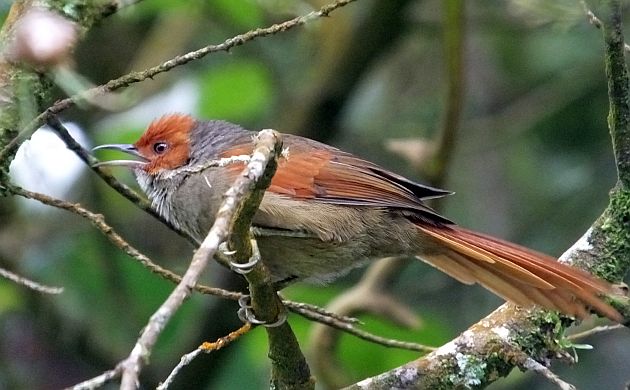
This Red-faced Spinetail was one of them.
Such a birdy day and yet, one that still lacked quite a few species. That always makes me wonder just how many birds occur on the slopes of Poas. Two hundred? More than three hundred? Since I have spent a fair number of days on most sides and accessible areas of the volcano, I have a fair idea of what lives there but before making the list, I had to delineate the area used for the species tally. Poas itself seems to be pretty straightforward but I wondered how far down both sides of the mountain should be included in my species list. For the Pacific slope, I settled on the area of the volcano that reaches the Central Valley. For the Caribbean side of the mountain, I left out areas below 600 meters.
A conservative count that included birds I have recorded as well as a few very likely additions, I ended up with more than 350 species. Given the different sets of habitats, that sounds about right, these are some details and questions associated with those numbers:
Very few waterbirds: Anyone who has plotted a Big Day is aware of the vital role played by waterbirds. A number of gulls, terns, sandpipers and other birds of wet habitats are prominent on most country lists, Costa Rica included. When we take into account that more than 350 species can show on Poas and that almost none are waterbirds, it’s a reminder of the high biodiversity hosted on the volcano!
Around 30 hummingbird species: This is a good area for hummingbirds and it’s easy to see several in a day of birding, especially at feeders at the Waterfall Gardens, the Volcan Restaurant, and the Colibri Cafe.
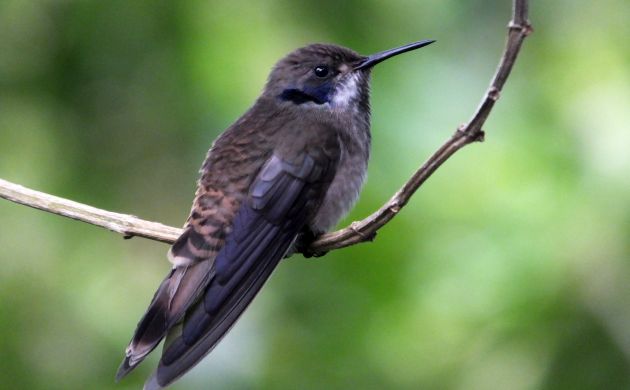
Brown Violetears can be common.
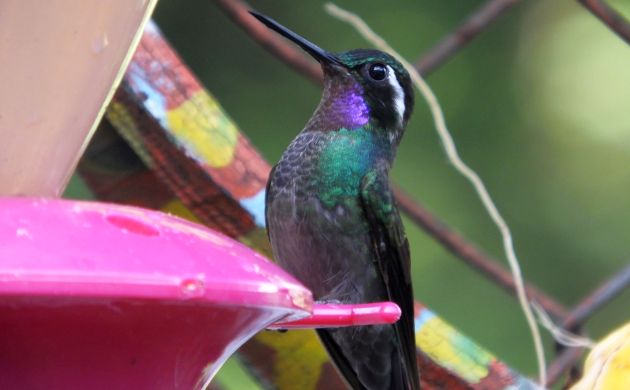
Purple-throated Mountain-gem is another of several common hummingbird species on Poas.
Lot of wrens and thrushes: Quite a few members of these families also chatter and sing from thickets and forest. I have seen thirteen species of wrens in the area covered, and 13 species of thrushes including all five species of nightingale-thrush that occur in Costa Rica.

A Black-throated Wren looking babbleresque at Cinchona.
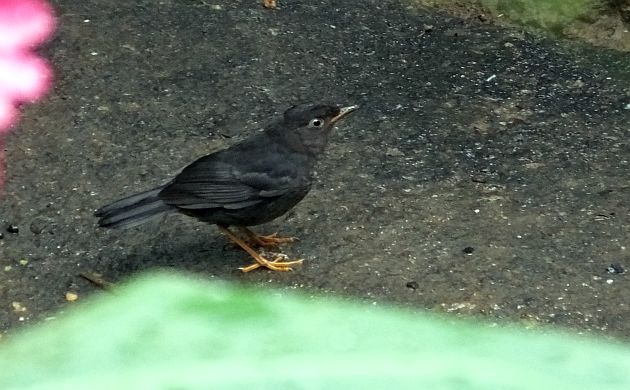
Slaty-backed Nightingale-Thrushes sing from the wet undergrowth of cloud forest, this juvenile was at the Colibri Cafe.
Forty-six regional endemics: The highlands of Costa Rica are ripe with endemic flora and fauna, so many that I refer to Route 126 on the eastern flanks of Poas as the “Via Endemica“. During a full day of guiding, I tend to start with the smart looking Cabanis’s Ground-Sparrow in the valley and round out the day with birds like silky-flycatchers, Flame-throated Warbler, and Collared Redstart in the cool, high elevation habitats.
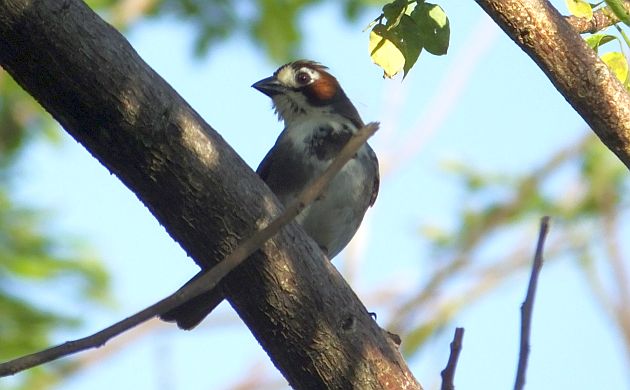
Cabanis’s Ground-Sparrow
How many Resplendent Quetzals?: I would love to assess the number of quetzals that live on Poas. One local guy who has lived there his entire life told me that there seemed to be fewer quetzals after a big earthquake that hit the area in 2009. He wondered if the quake had knocked down too many dead trees required by quetzals for nesting. I see the species once in a while on Poas but it seems to be rather rare compared to some other sites in Costa Rica.
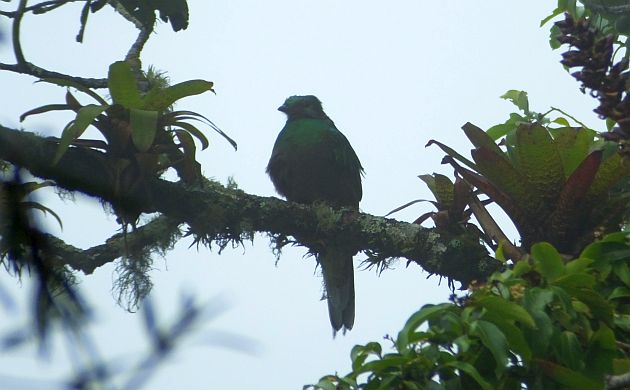
A female quetzal in the mists of Poas from August, 2018.
Which migrants use Poas?: From what I have seen, quite a few, especially wood-warblers. Black-throated Greens and Wilson’s are common in the high elevations, Blackburnians pass through in numbers, and even Cerulean Warblers use habitats on Poas during fall migration (I have seen two so far this past August). Other migrants include many Red-eyed Vireos, a Merlin that occasionally winters in the high elevations, and Baird’s Sandpiper stopping off at one of the crater lakes. Although I haven’t seen cuckoos on Poas, both Yellow-billed and Black-billed surely make use of forest on the volcano.
Missing birds: As in species that should be there but aren’t. Historically, they were almost certainly present, with reforestation, maybe some day, they can come back. The few missing birds on Poas would be the Three-wattled Bellbird, Bare-necked Umbrellabird, and Solitary Eagle. The cotingas are missing because the forests they used to migrate to at lower elevations have been gone for some time, replaced by pasture for cows. An occasional bellbird probably shows from time to time but not any umbrellabirds. As for the eagle, there used to be one or two that lived in the area up until the 90s, and a juvenile was likely seen on Poas a few years ago, I always bird with the hope that one of those giant black-hawks will wander back and set up house.
The Poas area offers up some easy, excellent birding, especially for birders staying in the San Jose area with just one or two free days. If you go, please post what you find in the comments!













I am more interested in how many species are there in CR compared with the last year?
Recent eBird taxonomy update cost me two species from my life list, and (at least) one of them from Costa Rica, possibly both?
@Dragan- There were two lumps and one split. If you saw a Buff-throated Foliage-gleaner on the Caribbean slope and the Pacific slope, then you would have seen one of the recent additions- Chiriqui Foliage-gleaner. That would cancel out losing one to the tanager lump. But, you would have had to have seen the foliage-gleaner on both slopes and that is quite possible.
Hi
I will be driving from SJO to La Selva on early December.
Is it possible to stop by and have a look at the hummingbird feeders and have a coffee? Is it worth to stop around 3 pm? Or is better to go straight to La Selva?
Thanks for your input.